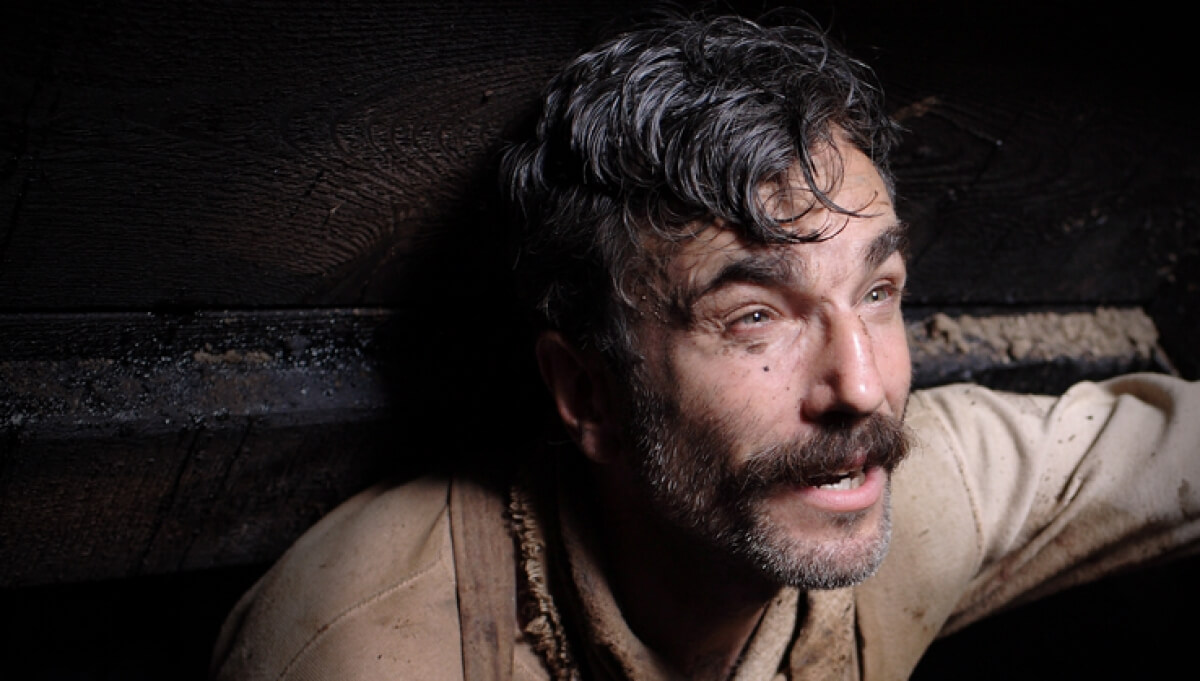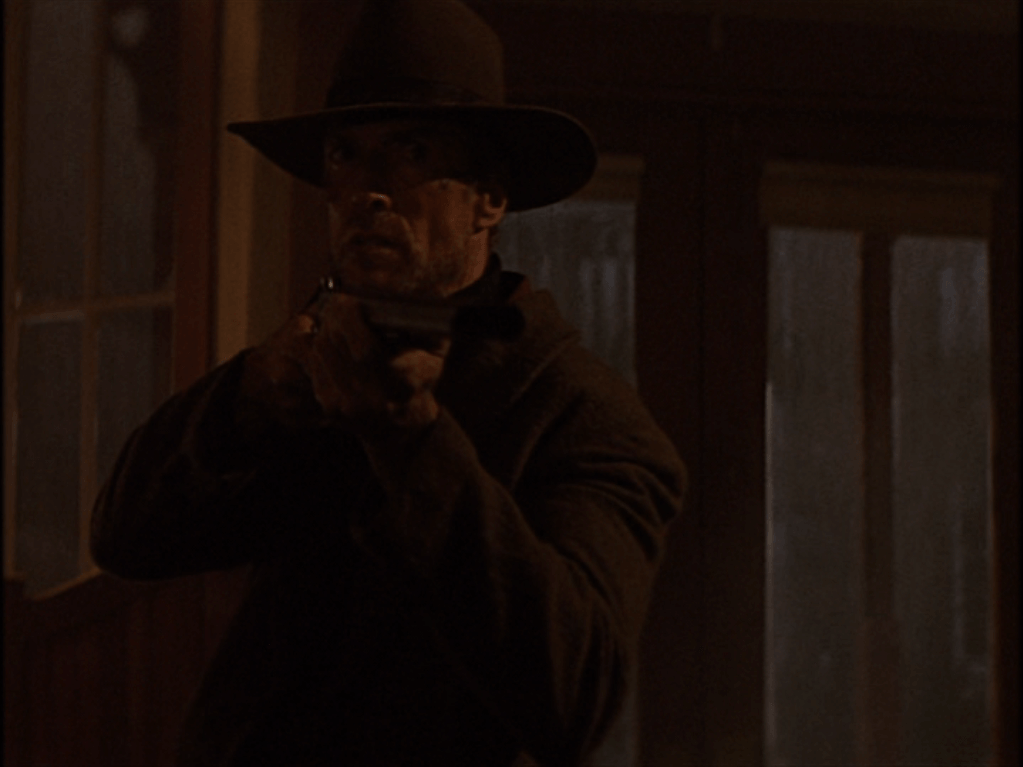The most memorable MOVIE MURDER SCENES

Kill, how easy it is to say. Certainly easier than writing a list about it. Killing is an everyday thing on screen. This is a topic for many publications and even film literature. And always with this type of selection some important scene will be missed. Creating a description of the most suggestive sequences, where one person takes the life of another or a third, aimed at creating an impression of horror and shock, often also moving, means a difficult choice. There is a certain simplification of the task: it does not say that the more brutal and gory the scene, the better the emotional result on the part of the viewer. One moment of murder can have more impact and meaning than mass murders in a typical slasher, gore movie or ordinary “stock” where the corpse is too dense and the mother’s head (sometimes literally) served on a plate. Much depends on the dramaturgy and climate, context, convention, meaning or justification of a given murder. The performance of the actors and the work of the director also play a significant role in building the effect. Sometimes such scenes can also have a negative impact on the viewer. Fascination with the crime shown may be born. After all, there have been cases of murder inspired by a film record, and the cinematic matter also draws from authentic killings. Below is a subjective list of the most interesting and memorable on-screen kills. In some descriptions, references were made to other scenes that could not be included in the general list due to their volume. The sequence of the scenes listed is random.
WARNING: MANY DETAILED SPOILERS!
One Flew Over the Cuckoo's Nest (1975)

The canon of Miloš Forman’s cinema with the fantastic Jack Nicholson will always remain one of the best outlined films about the struggle of an individual against a system that breaks his will. The action of the story takes place in a psychiatric hospital, which is kept in check by Sister Ratched. For her, the observance of order and regulations is a sacred thing. McMurphy, a thug who feigns mental illness to avoid prison, is brought into the facility. It increasingly disrupts the order so beloved and guarded by Ratched. Rebelling other patients, he sees in them divergent personalities, not a set of identical features. It introduces the spirit of freedom and freedom, wanting to liberate a closed group from the rigid, imposed framework of the hospital system, where individual needs, spontaneity, the desire to explore new spheres of life, discover previously unknown sensations or the ability to make your own decisions are stifled by orders and prohibitions. Ratched fails to tame a troublesome patient. But McMurphy pays the ultimate price for his coup. First, there is a tragedy within the walls of the facility due to Ratched’s excessive pragmatism. The facility manager catches the patients at a party McMurphy organized while the staff was away, celebrating her last day at the hospital. Thanks to Randle’s friend, a complex Billy experienced sexual initiation, but Ratched intends to draw the consequences, which pushes the boy to commit suicide. McMurphy has an opportunity to flee, but rage prevails. The man throws himself at the woman and, choking her, nearly kills her. Punishment is the worst possible for him. Brain-lobotomized McMurphy is stripped of everything he expressed and wanted to instill in his colleagues at the hospital. Chief Bromden decides to do him a favor, knowing full well that his friend would not want to live trapped in his own body, limited to the maximum, vegetating like a human vegetable, practically remaining dead while alive. He smothers him with a pillow, and he continues Randle’s idea. He escapes the building, smashing the wall with a concrete sink that McMurphy couldn’t lift. The murder of the character played by Nicholson is a form of euthanasia, the only way, or rather salvation, from the torment of existence. Clint Eastwood followed a similar path in Million Dollar Baby, where the boxer played by Hilary Swank asks her trainer to put an end to her ordeal by taking her life.
There Will Be Blood (2007)

What does greed and pride combined with a visible aversion to people lead to? What happens when greed is satisfied with material goods, but there is still a need to vent one’s misanthropy, especially when the person despised and hated is within reach and begs for support? You can find out by waiting for the end of Paul Thomas Anderson’s ambitious film. A character with the above-mentioned characteristics is played with the Oscar-winning reverence by Daniel Day Lewis as an oil prospector, a manipulator, a cynic striving for a fortune in a similar style as Tony Montana in Hawks and De Palma’s Scarface. Daniel Plainview only kills two people, but in Anderson’s film, it’s not quantity that matters, it’s quality. The first time he kills the person who pretended to be his brother. Daniel interpreted this not so much as deceit and disloyalty, but rather as greed, for a stranger was playing his relative in order to profit from his future wealth. By the way, we have a testimony: the oilman is ready to kill on his way to big money. A more telling killing occurs at the end of the show. Daniel became rich and holed up in his estate. His adopted, adult son, whom he used to enrich himself, is chased away by Daniel with the truth told in a contemptuous tone. Moments later, self-proclaimed, obsessed preacher Eli Paul Sunday, a rival from his past, a man who has been a major obstacle to Daniel’s pursuit of his goal, shows up at his home. The priest is now in need, he repents, asking for a financial favor. Plainview is willing to lend a helping hand, provided the reverend denounces his religious beliefs loudly, confessing repeatedly and convincingly that he is a false prophet and that God is superstition. Daniel deliberately plays back, because once he himself had to pretend to be a converted penitent before Paul and his followers. Now the roles have reversed. It is the preacher who must, against his will, express a view inconsistent with his ideology and faith. For Daniel, this is proof that Paul is a lying hypocrite playing a clergyman, and in fact guided only by the desire for profit. The miner exposes his pettiness and duplicity, and at the same time, deep down, he notices several common denominators. With satisfaction, he humiliates Sunday, revealing that the land rich in oil deposits, which he wanted to seize with Daniel’s financial contribution, was bought by him long ago along with the resources. Plainview used the drain, the whole masquerade was deliberate, to disgrace the clergyman. The horny tycoon starts throwing insults at Eli, throwing bowling pins at him, while Paul tries to get out of the apartment in a panic like a scared kid. Eventually, he falls over, and Daniel after a little thought, he kills the preacher with two blows. After a while, the footman comes down and, seeing the sight, asks a peculiar question, to which he receives an even more bizarre answer. Plainview felt bitter after talking to his son, and the feeling of loneliness he celebrated so much turned out to be his greatest enemy at that moment. Bitterness, despite prosperity, was further strengthened by alcohol. Daniel, killing Paul, felt purification and harmony. The scene is theatrical and grotesque, with a touch of tragedy and ambiguity. The frames carry a taste of the refined and visionary works of Stanley Kubrick, and Anderson never concealed his inspiration from the legendary British director.
Unforgiven (1992)

The presentation of the murder scenes featured various film genres, such as: psychological, social or war drama, horror and thriller. What about a western? After all, a “cowboy hat and revolver” movie cannot do without killing moments. And at this point there is a little dilemma, because the two westerns are considered masterpieces of the genre. Once Upon a Time in the West by Sergio Leone, the spaghetti western milestone, and Clint Eastwood’s Unforgiven two decades later. Which one should you choose on this list? After all, the scene when Frank (the perfect Henry Fonda) shoots the boy who “knew his name” or the moment when he kills the brother of the character played in adulthood by Charles Bronson are diamonds in the subject. Eastwood’s work is the renaissance and twilight of the western in one installment. In fact, it is a moral drama dressed in genre clothes. The myth of the Wild West is completely overthrown here, the heroes are people of flesh and blood, violence and killing have no showy cover. It’s real and bleak, and therefore much more believable than in other Western stories. The main character of Eastwood’s film, played by himself, is once a ruthless killer and gunslinger, now struggling as a farmer after the death of his beloved wife and mother of his children. William Munny has abandoned his old life and ways and has undergone a transformation in the name of love. However, he accepts the offer of young Schofield and, together with him and old friend Ned Logan, sets out to find some cowboys to kill them for money because they disfigured a prostitute. Standing in their way is the cynical and brutal Sheriff Little Bill Daggett (very convincing Gene Hackman), who guards order and justice according to his own rules. The wanted cowboys are found and punished, but during the execution of the assignment comes to a reckoning with their own conscience. Ned Logan lets go, he is no longer able to kill a man. Munny, who even killed women and children in his youth, also has ethical difficulties. After all, he swore on his wife’s grave that he would never go back to his former profession. Young Schofield, a brazen poseur posing as a killer, realizes that killing another person is not a piece of cake. He convinces himself that he is not a tough guy and a gunslinger.
The film ends with eloquent killing scenes. First, Logan is captured by the sheriff’s men, who try to whip him for information about William. Afterwards, Munny learns that his friend was murdered by Daggett. Although the viewer does not see this scene, he imagines it while listening to William’s conversation with the prostitute. We learn that Ned died wrongly – even though he didn’t hurt anyone, the sheriff illegally found him guilty. William decides to get revenge, reaches for a bottle of alcohol, dismisses earlier doubts and shows up at the bar where he was humiliated by the sheriff. Earlier, he notices a dead friend displayed in an open coffin outside the premises as a calling card and a warning to others. Munny confronts Little Bill and his men. Despite being outnumbered by the other side, William misses his opponents, who can’t get a shot on target. Some may object that this is an unrealistic exaggeration, but the explanation can be found in the scene when the sheriff brags about his knowledge and experience to biographer Beauchamp on the correct shooting of a rival. Daggett said that coolness and composure were more important than speed. His right theory turned against him during a duel with William. At the end, the wounded sheriff stands face to face with Munny one last time. Perhaps for the first time, Daggett shows weakness, realizing that he has been defeated. William finishes him off with icy calm. After all, he leaves the city, even unscratched by a bullet, showing a substitute of his former face.

